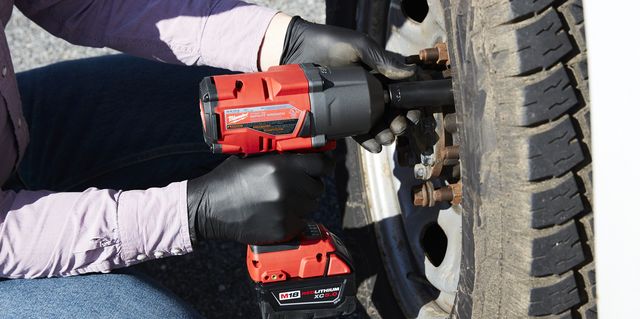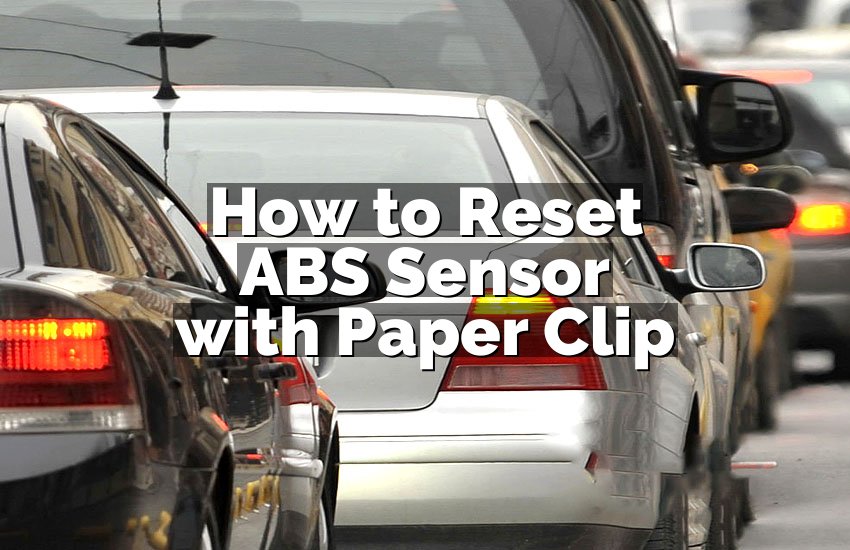Wrench size for a car battery and other essential tools can vary, but it is typically recommended to use a 10mm wrench for battery terminals. Having the right tools for maintaining your car is crucial to ensure efficient repairs and maintenance.
Alongside the necessary wrench size for battery terminals, there are other essential tools that every car owner should have. These tools include a socket set, pliers, screwdrivers, jumper cables, and a multimeter. A socket set is useful for various purposes, from removing bolts to replacing parts.
Pliers are versatile tools that can be used for gripping and cutting. Screwdrivers are necessary for simple tasks like replacing light bulbs or removing license plates. Jumper cables are essential in case of a dead battery, while a multimeter helps diagnose electrical issues. By having these tools in your car, you’ll be prepared for unforeseen circumstances and routine car maintenance.

Credit: www.amazon.com
Why Wrench Size Matters
The size of a wrench is essential when it comes to working with car batteries and other tools. Choosing the right wrench size ensures a secure fit, preventing damage and ensuring efficient use of your tools. Make sure to have the appropriate wrench sizes for various tasks.
Determining The Correct Wrench Size
When it comes to working on your car battery or any other automotive projects, understanding the importance of wrench size is essential. The correct wrench size ensures that you can effectively loosen or tighten bolts and other components for a secure fit. Determining the correct wrench size is a straightforward process that can save you valuable time and effort.
To determine the correct wrench size for your car battery or any other component, there are a few simple steps you can follow:
- Examine the bolt or nut: Look closely at the bolt or nut you need to work on. Pay attention to the shape and size of the head.
- Measure the head: Use a measuring tool, such as a tape measure or caliper, to measure the distance across the flats of the bolt head. This measurement indicates the wrench size you need.
- Refer to a wrench size chart: If you are unsure about the measurement or need to convert measurements, consult a wrench size chart. These charts provide a comprehensive list of standard and metric sizes for different types of bolts and nuts.
By following these steps to determine the correct wrench size, you can ensure that you have the right tool for the job. Using the correct wrench size will minimize the risk of slipping or damaging the bolt or nut, making your work more efficient and avoiding potential costly mistakes.
Impact Of Incorrect Wrench Size
Using the incorrect wrench size can have a significant impact on your automotive projects. It can lead to various complications and potentially compromise the integrity of the components you are working on. Here are a few consequences of using the wrong wrench size:
- Slippage: If the wrench is too small, it may not fit properly on the bolt or nut, leading to slippage during the tightening or loosening process. This can result in injuries or damage to the surrounding components.
- Stripped fasteners: Applying excessive force with a wrench that is too big can lead to stripped or rounded fasteners. This makes them difficult to remove or replace and can cause unnecessary frustration and delays.
- Component damage: Using the incorrect wrench size can cause damage to the bolt or nut itself, as well as the surrounding components. This can result in leaks, poor connections or electrical issues, and may require costly repairs.
- Inefficient work: Working with the wrong wrench size can slow down your progress and make the task more challenging than it needs to be. This can lead to wasted time, increased frustration, and a less-than-optimal final outcome.
To avoid these potential complications and ensure the success of your automotive projects, always determine and use the correct wrench size for the task at hand. Taking the time to do so will not only save you time and effort, but also help maintain the longevity and performance of your car battery and other components.

Credit: www.harborfreight.com
Choosing The Right Wrench Size For Car Battery
Choosing the Right Wrench Size for Car Battery is crucial for proper maintenance and installation. It ensures that you have the right tool to effectively work with the battery terminals without damaging them.
Understanding Battery Terminal Sizes
Before determining the wrench size for a car battery, it’s essential to understand the different battery terminal sizes. Car battery terminals usually come in standard sizes, including 5/16 inch and 3/8 inch for most vehicle models. These sizes are referring to the diameter of the terminal posts and will help you choose the appropriate wrench.
Matching Wrench Size To Battery Terminal
In order to match the wrench size to the battery terminal, it’s important to measure the posts and select the correct wrench accordingly. For instance, if your car’s battery has 5/16 inch terminal posts, then a 5/16 inch wrench should be used. Similarly, for 3/8 inch terminal posts, a 3/8 inch wrench is required for a secure fit during maintenance or replacement.
Essential Tools For Car Battery Maintenance
When it comes to car battery maintenance, having the right tools at hand is essential. These tools not only make the job easier but also ensure the longevity and optimal performance of your car battery. In this article, we will discuss three must-have tools for car battery maintenance: Battery Terminal Cleaner, Battery Terminal Brush, and Battery Terminal Puller.
Battery Terminal Cleaner
The Battery Terminal Cleaner is a simple yet effective tool that helps remove corrosion and build-up from the battery terminals. Corrosion on the terminals can impede the flow of electricity and reduce the battery’s performance. Using a specially designed cleaner, you can quickly and easily clean the battery terminals, ensuring a secure connection and efficient power transfer.
Battery Terminal Brush
The Battery Terminal Brush is another handy tool that complements the cleaner. This brush is specifically designed to remove stubborn corrosion and grime from the battery terminals. With its wire bristles, it can reach tight spaces and remove any debris that may affect the battery’s performance. Regular use of the brush helps maintain clean and corrosion-free terminals, extending the lifespan of your car battery.
Battery Terminal Puller
The Battery Terminal Puller is a must-have tool for safely removing battery terminals. Sometimes, the terminals can become tightly stuck, making it difficult to disconnect the battery. Using pliers or other improper tools can damage the terminals or lead to accidents. A battery terminal puller allows you to remove the terminals without any damage or risk, ensuring a smooth and hassle-free battery replacement or maintenance process. It provides a firm grip and the necessary leverage to safely pull the terminals off without harming the battery or yourself.
With these essential tools in your toolkit, you can easily maintain your car battery and ensure its efficient performance. Regular cleaning and maintenance using the Battery Terminal Cleaner and Brush will help prevent corrosion and prolong the battery’s lifespan. And when the time comes for a battery replacement, the Battery Terminal Puller will ensure a safe and hassle-free process.

Credit: www.popularmechanics.com
Additional Tools For Car Maintenance
Regular car maintenance is crucial for the longevity and performance of your vehicle. Along with the basic tools needed for car maintenance, there are a few additional tools that can make your job easier and more efficient. These tools help you diagnose any issues with your car battery and ensure its optimal functioning. Let’s take a closer look at two essential additional tools: Battery Jump Starter and Battery Load Tester.
Battery Jump Starter
A battery jump starter is a convenient tool to have on hand in case your car battery dies unexpectedly. It allows you to jump-start your vehicle without needing another car or assistance from a passerby. With a battery jump starter, you can get back on the road quickly and avoid the hassle of waiting for a tow truck or finding someone with jumper cables.
Instructions on how to use a battery jump starter:
- Make sure both the jump starter and your car battery are fully charged.
- Connect the red clamp of the jump starter to the positive terminal of your car battery.
- Connect the black clamp of the jump starter to a metal part of your car, such as a bolt or the engine block.
- Turn on the jump starter and start your car. It should start right away.
- Once your car is running, disconnect the jump starter, starting with the black clamp, then the red clamp.
Battery Load Tester
A battery load tester helps you determine the health and capacity of your car battery. This tool applies a load to the battery, simulating real-world conditions, and measures how well the battery performs under that load. By using a battery load tester, you can identify if your battery needs to be replaced or if it simply needs to be charged.
How to use a battery load tester:
- Ensure your car battery is fully charged before testing.
- Connect the load tester’s positive and negative leads to the corresponding terminals on your car battery.
- Apply the load by turning the load tester’s dial or pressing the appropriate button.
- Observe the reading on the load tester’s display. It will indicate the battery’s capacity and health.
Remember to consult your car’s manual or seek professional assistance if you are unsure about using any of these tools.
Common Mistakes When Using Wrenches
Using The Wrong Size Wrench
Using the wrong size wrench can lead to damaged bolts and nuts, as well as injuries to yourself. It’s crucial to always use the correct size wrench for the specific task at hand.
Over-tightening Or Under-tightening
Over-tightening or under-tightening can have serious consequences, such as stripped threads, broken bolts, or a loose connection. It’s important to use a torque wrench when tightening fasteners to ensure they are at the proper torque.
Safety Precautions When Using Wrenches
When it comes to working on your car’s battery, using the correct wrench size and following safety precautions is essential. Whether you’re removing or tightening the battery terminals, it’s crucial to take the necessary steps to protect yourself and your vehicle. In this section, we will discuss two important safety precautions: wearing protective gloves and using proper technique. By following these guidelines, you can ensure a safe and successful battery maintenance experience.
Wearing Protective Gloves
When working with wrenches and car batteries, wearing protective gloves is crucial. These gloves not only provide a layer of insulation against potential electric shock but also safeguard your hands from corrosive battery acid. The acid can cause severe burns and skin irritation. To protect yourself, make sure to wear gloves made of materials like rubber or latex, as they provide excellent chemical resistance.
Additionally, gloves with a textured finish or grip pattern can help you maintain a firm hold on the wrench, reducing the risk of slipping and causing injury or damage. Remember, safety should always come first, and wearing protective gloves is a simple yet effective way to protect your hands while working with wrenches and car batteries.
Using Proper Technique
Using the proper technique when using wrenches is essential for safety and efficiency. Here are some guidelines to keep in mind:
- Tighten with care: Avoid overtightening the battery terminals as it can damage the connectors or cause a short circuit. Use just enough force to secure the connection.
- Avoid metal contact: Make sure to keep wrenches or other metal tools away from exposed metal surfaces of the battery or other electrical components to prevent accidental short circuits.
- Work in a well-ventilated area: Car batteries emit potentially harmful gases, such as hydrogen. Ensure you are in a well-ventilated space or open the car hood for proper air circulation while working.
- Remove jewelry or metallic accessories: Take off any jewelry, watches, or metallic accessories before working on the car battery. This eliminates the risk of accidental contact with a live electrical connection.
By following these tips, you can ensure your safety and minimize the risk of accidents or damage while using wrenches on your car battery. Remember, it is always better to prioritize safety and take the necessary precautions before diving into any DIY car maintenance tasks.
Conclusion
Having the right tools for car battery maintenance is crucial. Proper wrench size, along with essential tools like gloves and a battery brush, ensure a smooth and safe process. By investing in the correct tools, you can save time and money, and maintain your car’s battery effectively.


